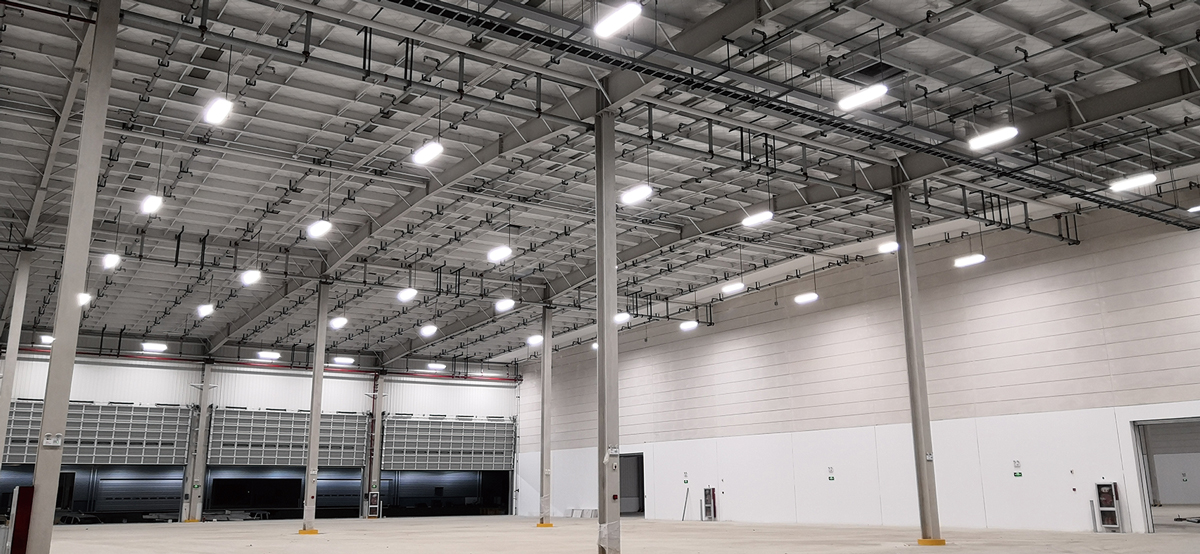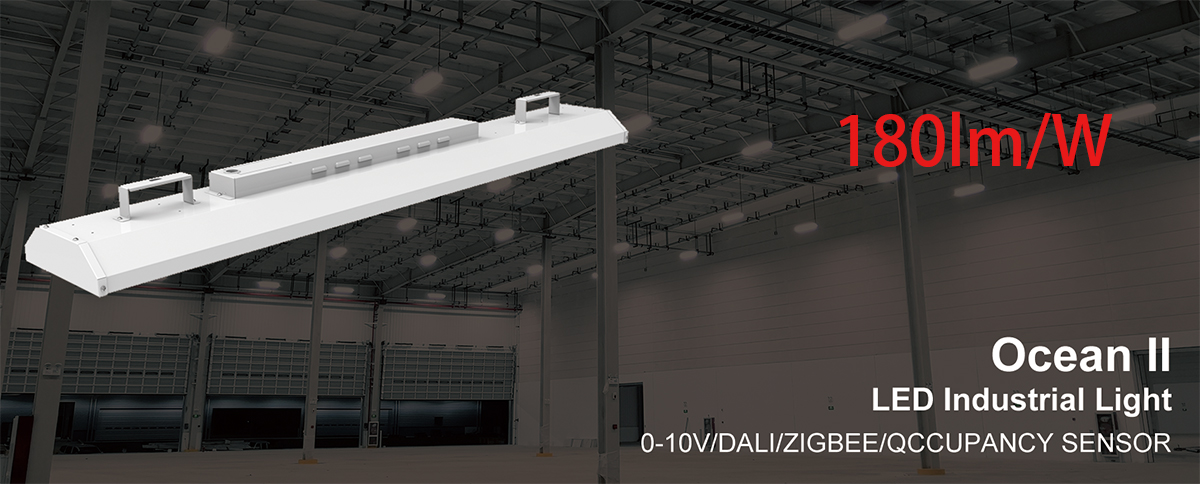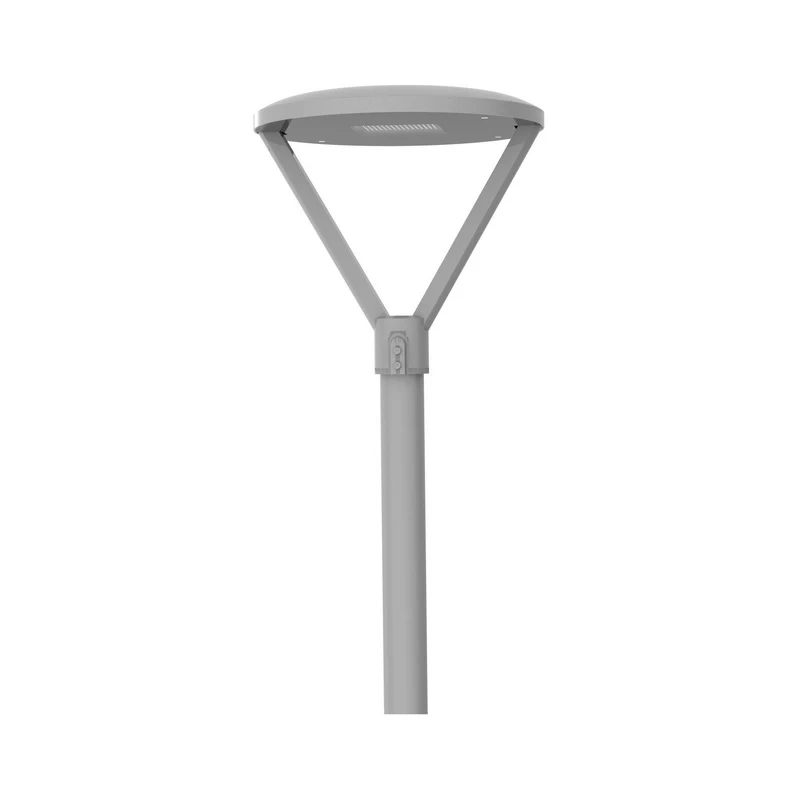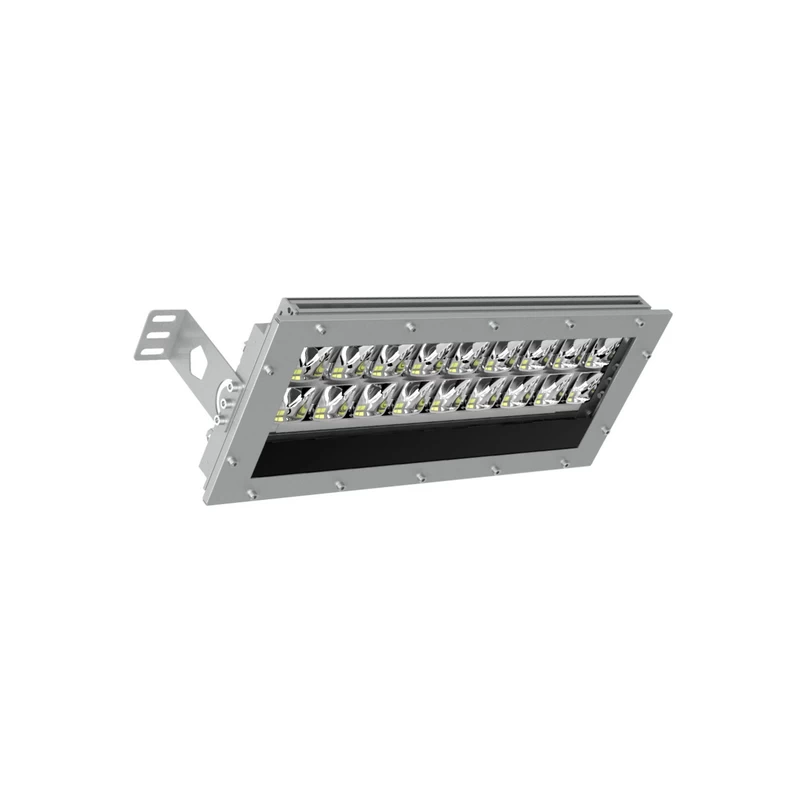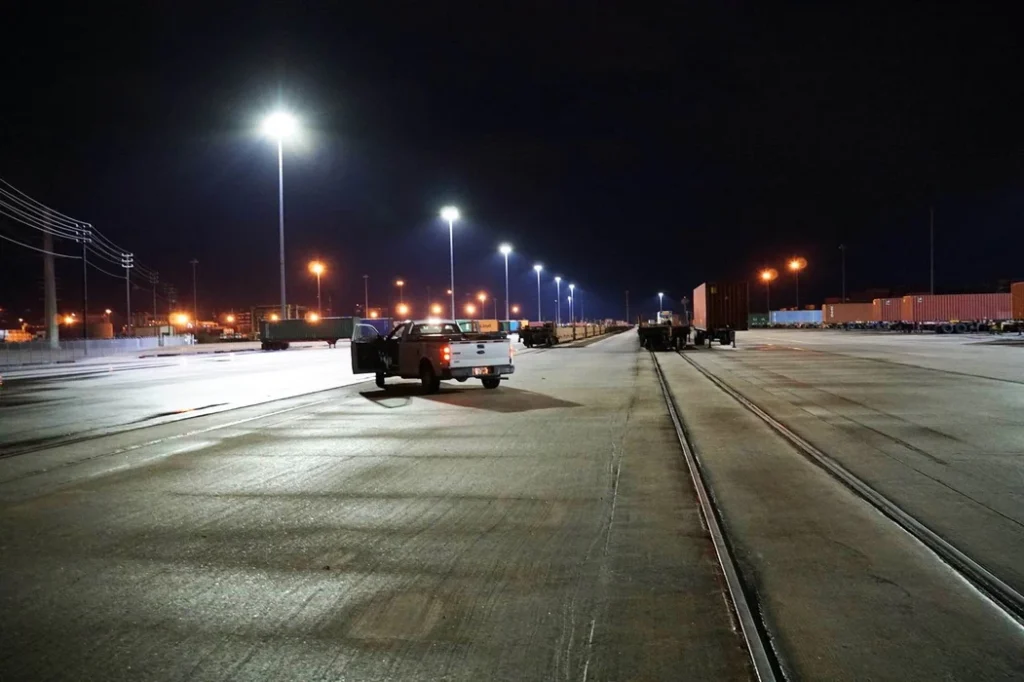Lámparas LED lineales de techo alto: avance en eficiencia lumínica de 130lm/W a 180lm/W
Para satisfacer más necesidades, las lámparas LED lineales de techo alto LEDRHYTHM Serie Ocean II se ha mejorado de 130 lm/W a 180 lm/W. Esta actualización ha aportado muchas ventajas a los clientes. En este artículo se describen los puntos fuertes de esta actualización y su uso por parte de los clientes, y se muestra el excelente rendimiento de las lámparas actualizadas.
1. Aumento del brillo tras la actualización
Lo más destacado de las lámparas LED lineales para techos altos Ocean II mejoradas es la notable mejora de la luminosidad. Con una eficiencia luminosa de hasta 180 lm/W, la lámpara consume menos energía que antes y proporciona la misma luminosidad. Esto permite a los clientes ahorrar energía y reducir las emisiones a la vez que disfrutan de un entorno luminoso y contribuyen a la causa de la protección ecológica del medio ambiente.
En comparación con otros productos similares, las lámparas mejoradas son más brillantes. Con una eficiencia luminosa de hasta 180lm/W, la lámpara puede proporcionar más flujo luminoso por unidad de tiempo, ofreciendo a los clientes un efecto de iluminación más brillante. Tanto si se trata de iluminación de oficinas, centros comerciales u hogares, las lámparas LED lineales para techos altos mejoradas pueden satisfacer las demandas de los clientes de un entorno luminoso brillante y confortable.
2. Ahorro de energía y protección del medio ambiente tras la actualización
Además de la mejora de la luminosidad, el nuevo Océano II Las lámparas LED lineales para techos altos también presentan importantes ventajas de ahorro energético. Las perlas de lámpara LED de alta eficiencia y los sistemas de accionamiento optimizados hacen que la eficiencia de conversión de potencia sea superior a 90%, lo que reduce significativamente el consumo de energía. En comparación con productos similares que no han sido mejorados, las lámparas mejoradas pueden ahorrar mucha electricidad durante su uso a largo plazo, ahorrando a los clientes costes de funcionamiento y contribuyendo al mismo tiempo a la conservación de la energía nacional y a la reducción de emisiones.
Con la creciente concienciación sobre la protección del medio ambiente, cada vez más gente presta atención al rendimiento medioambiental de los productos. Las lámparas LED lineales para techos altos mejoradas están fabricadas con materiales respetuosos con el medio ambiente, como aleación de aluminio reciclable y materiales de silicona no tóxicos e inocuos. Además, las lámparas no producen sustancias nocivas durante su uso y se ajustan al concepto de protección ecológica del medio ambiente, lo que permite a los clientes sentir la tranquilidad y la comodidad que aporta la protección del medio ambiente durante su uso.
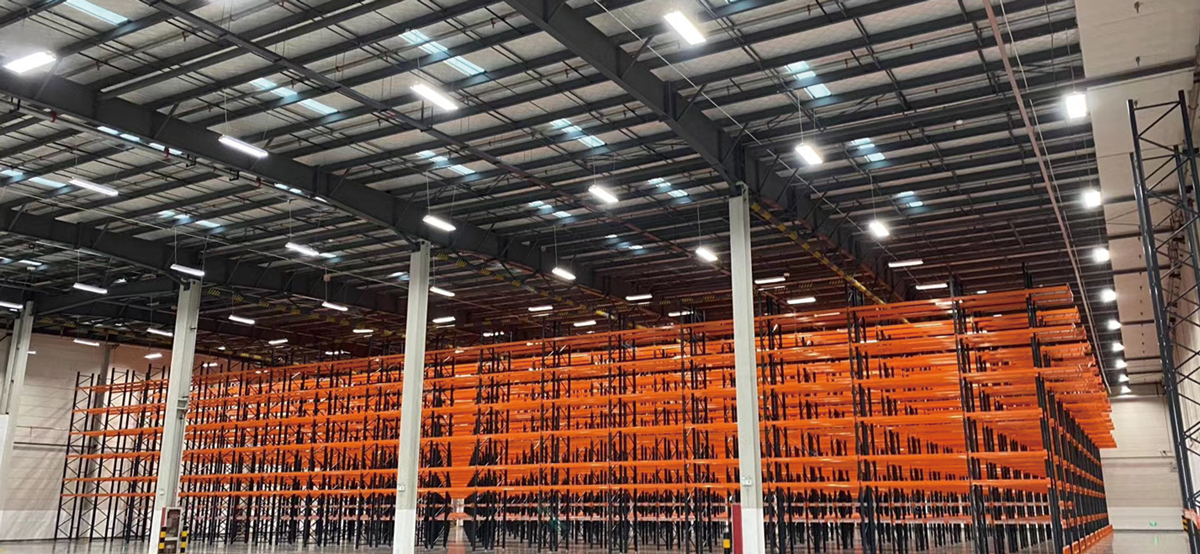
3. Mayor vida útil tras la actualización
La actualización Océano II Las luminarias LED lineales para techos altos también tienen una vida útil más larga. Los materiales y procesos de fabricación optimizados mejoran enormemente la durabilidad de las lámparas. Al mismo tiempo, el eficaz sistema de accionamiento y el control estable de la corriente también garantizan la larga vida útil de las perlas de las lámparas LED. Esto significa que los clientes pueden obtener beneficios de uso más prolongados después de comprar lámparas mejoradas, reduciendo los problemas y los costes causados por la sustitución frecuente de las lámparas.
4. Comentarios de los clientes
Las lámparas LED lineales para techos altos mejoradas han recibido una calurosa acogida por parte de los clientes desde su lanzamiento. Los clientes hablan maravillas de sus excelentes efectos de iluminación, su rendimiento de ahorro energético y su larga vida útil. Muchos clientes afirman que las lámparas mejoradas les ahorran consumo de energía al tiempo que proporcionan un entorno de iluminación suficientemente brillante, lo que hace que el trabajo y la vida sean más cómodos y confortables.
Después de usar la versión mejorada de LEDRHYTHM Serie Ocean lámparas, algunos lugares comerciales, como centros comerciales y oficinas, han afirmado que sus excelentes efectos de iluminación han mejorado enormemente la exposición de los productos y los entornos de trabajo. Al mismo tiempo, debido a la mejora del rendimiento de ahorro de energía, también ahorra a los clientes una gran cantidad de costes de funcionamiento.
Las empresas de logística y almacenaje también están a favor de la actualización de las lámparas LED lineales de techo alto. Muchos clientes de empresas de logística y almacenamiento afirman que la actualización de las luminarias les ha permitido disfrutar de un entorno luminoso y confortable. Al mismo tiempo, los costes energéticos de la empresa cliente se redujeron en 30%, y la eficiencia de clasificación de la carga de la empresa cliente aumentó en 20%. Además, como las lámparas tienen una vida útil más larga, también eliminan el problema de la sustitución frecuente de las lámparas, lo que ahorra a la empresa cliente 50% de tiempo y costes de mantenimiento.
